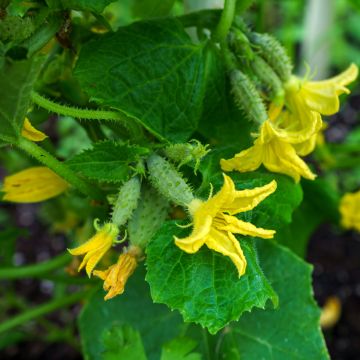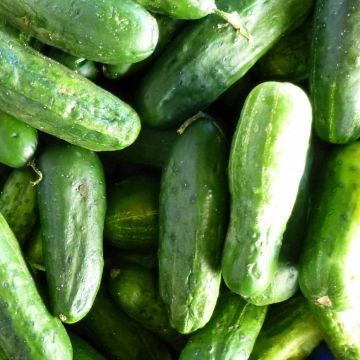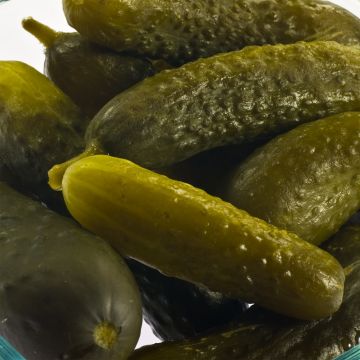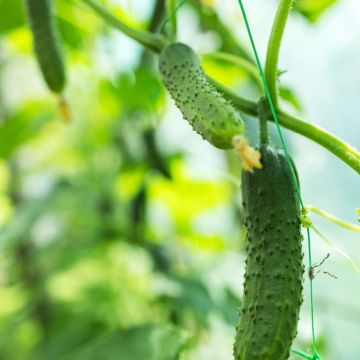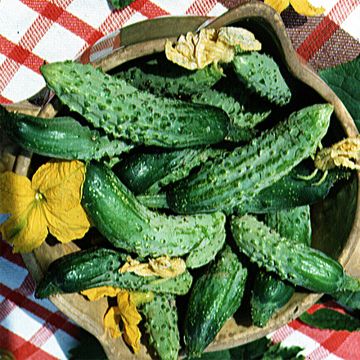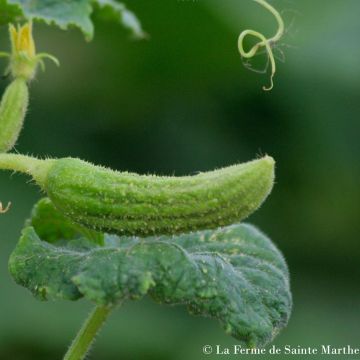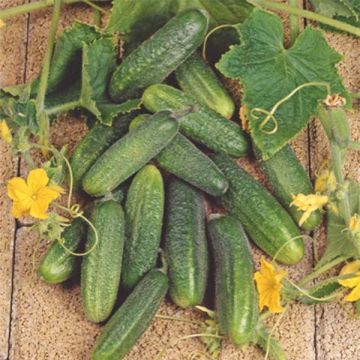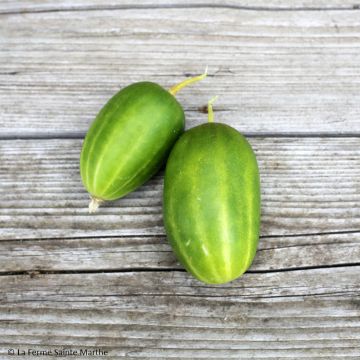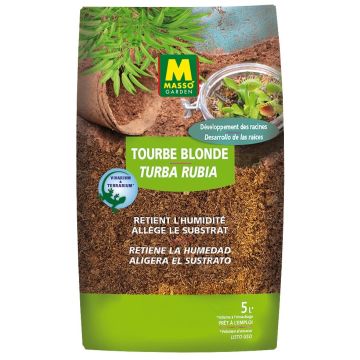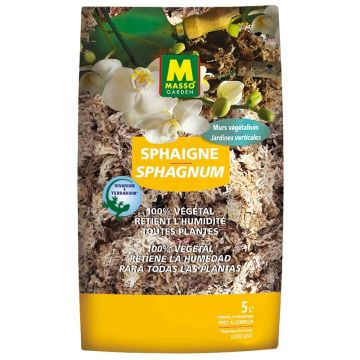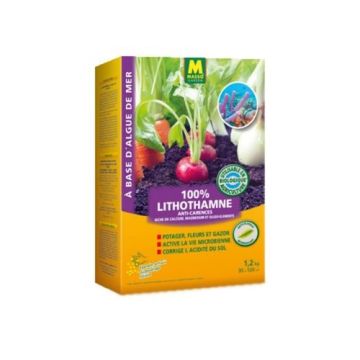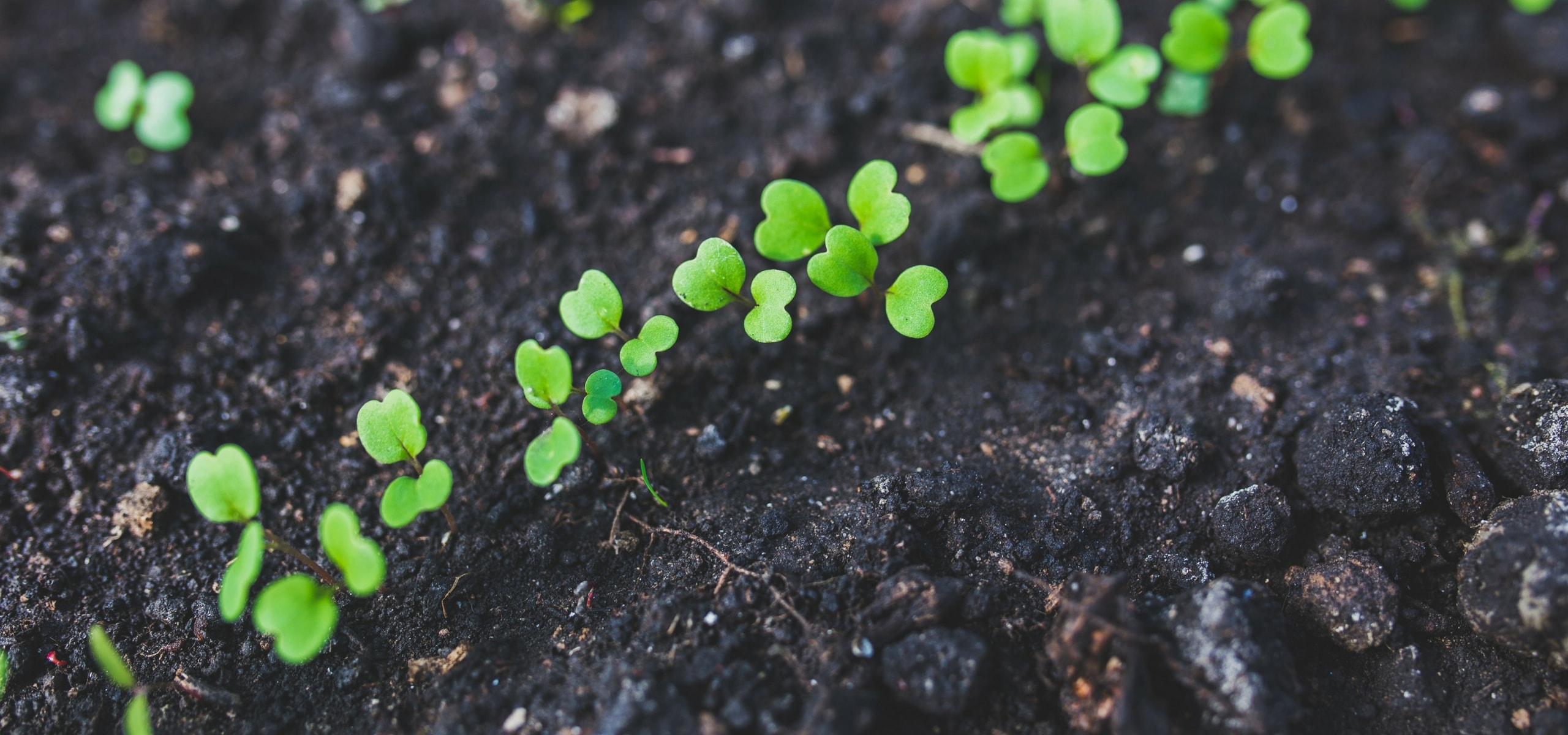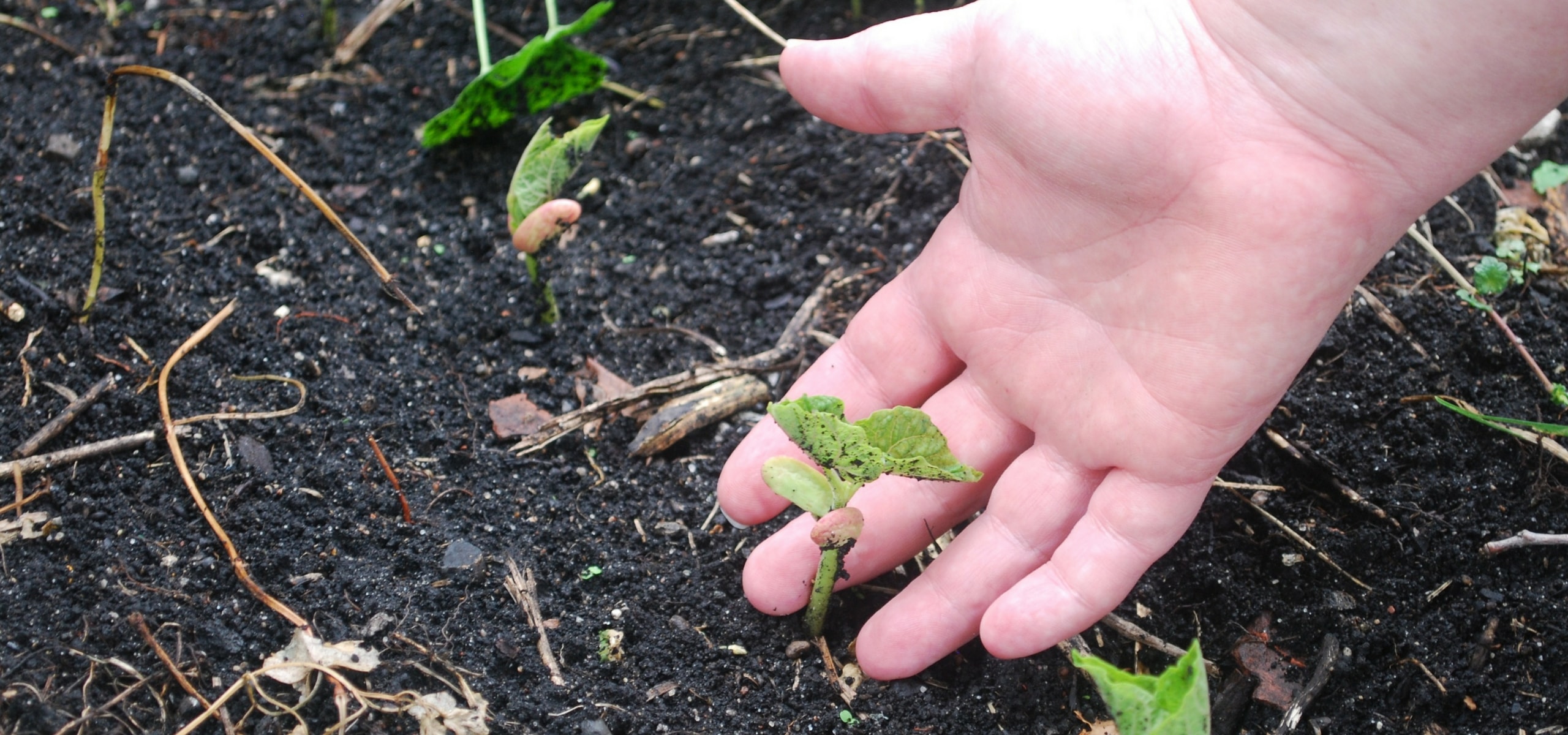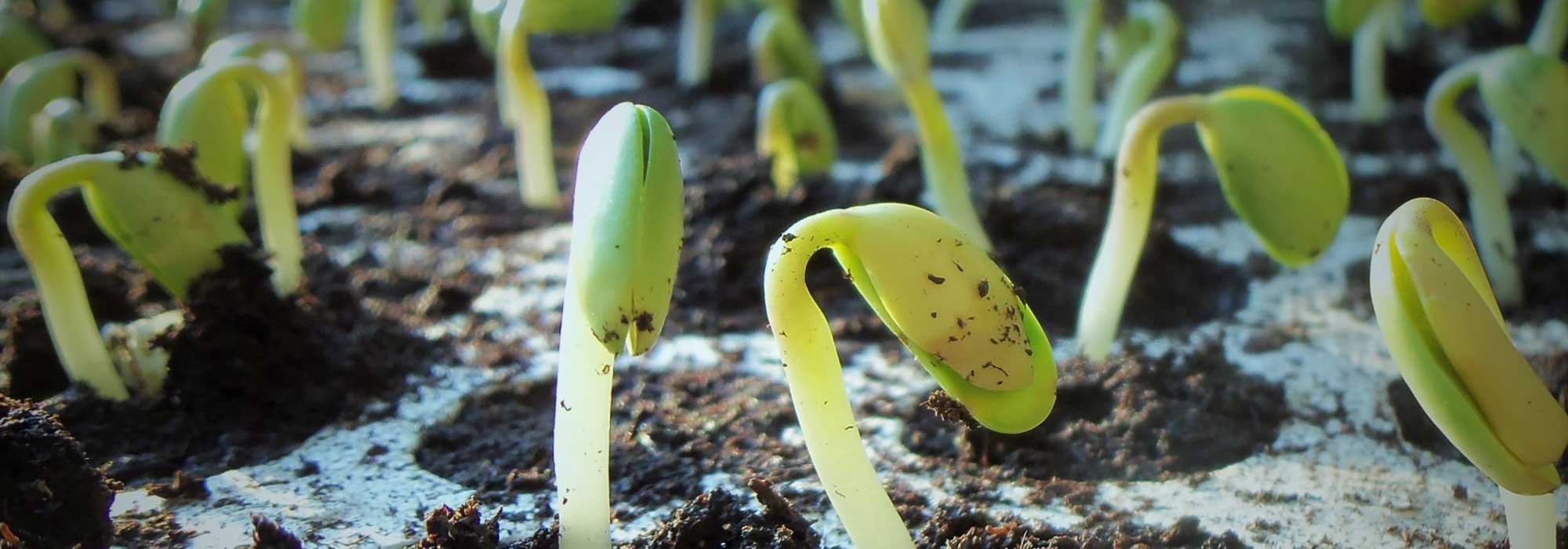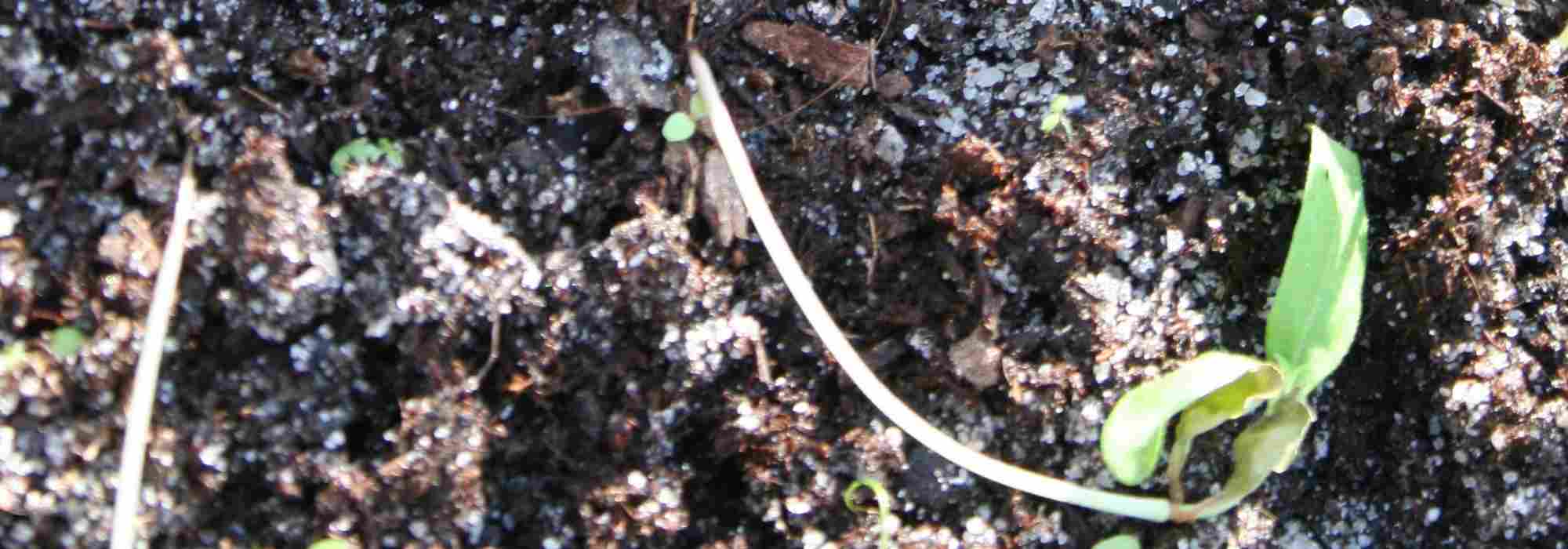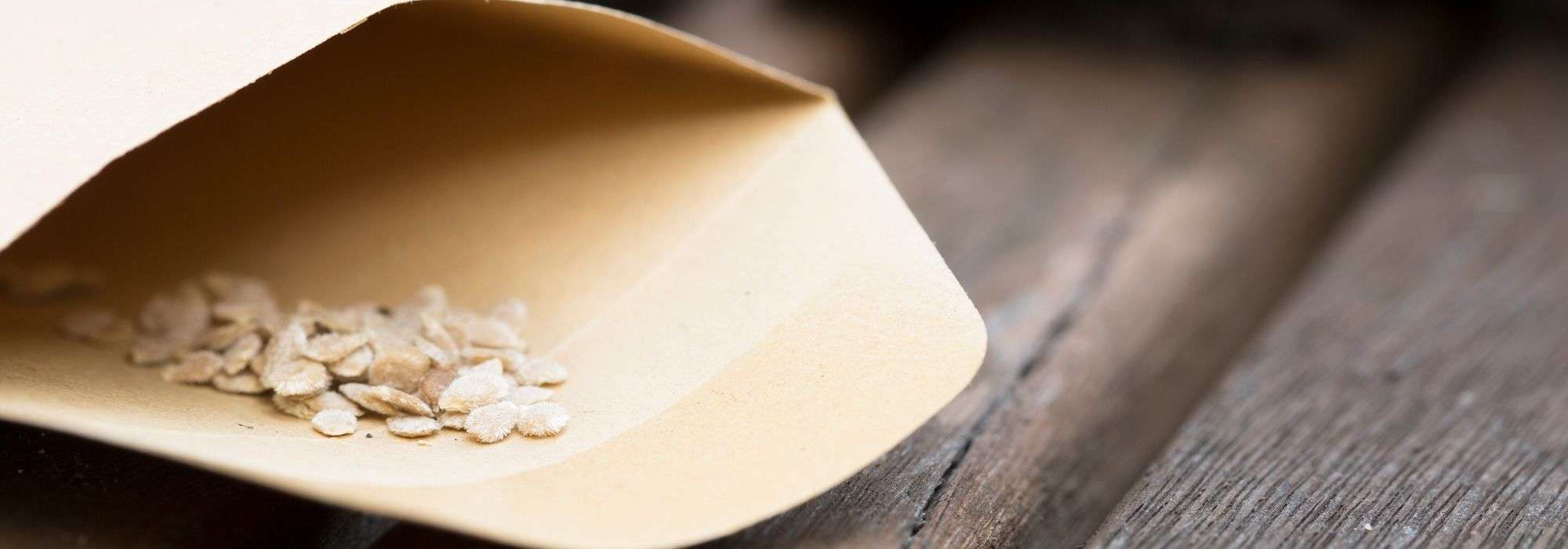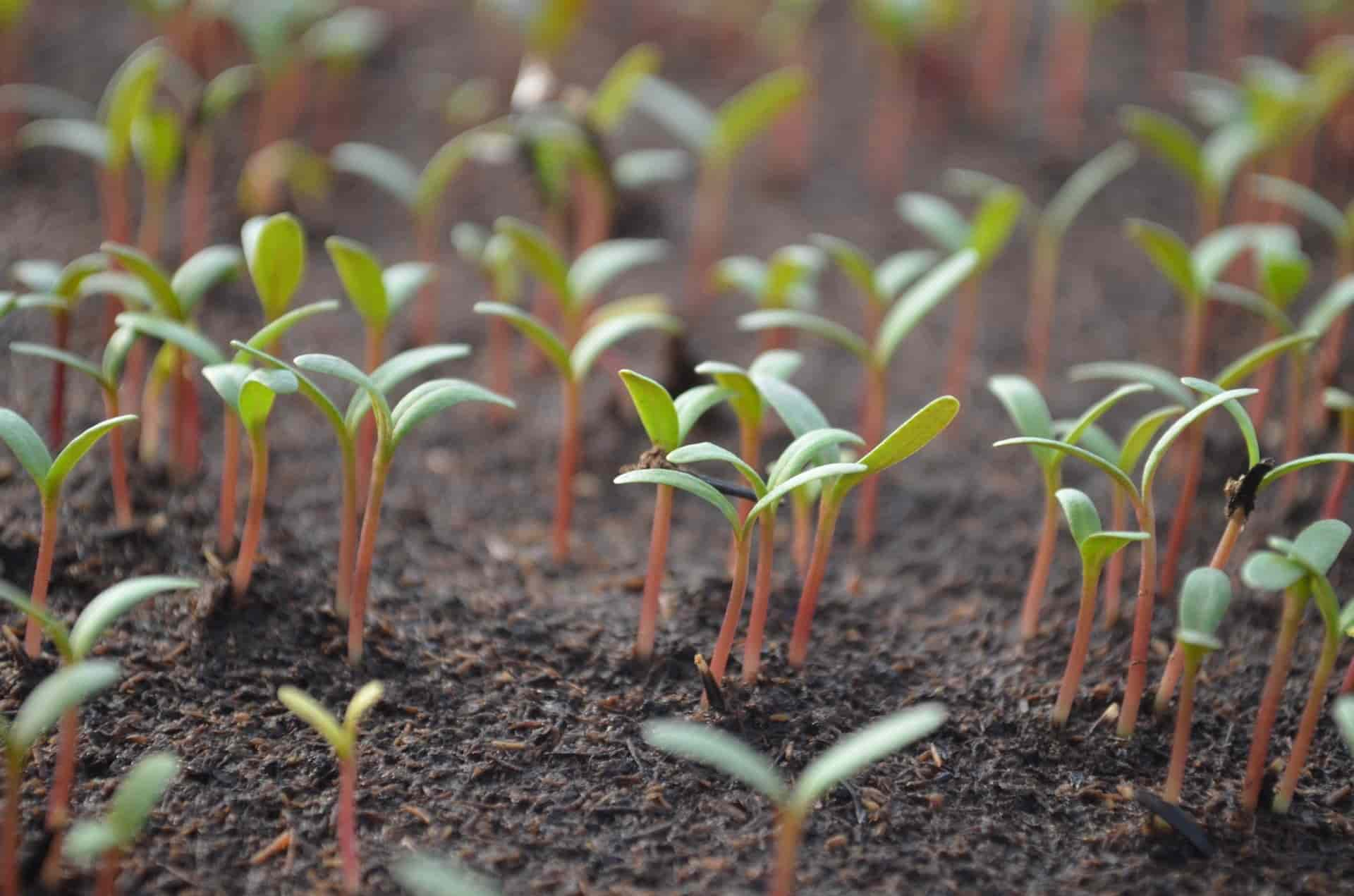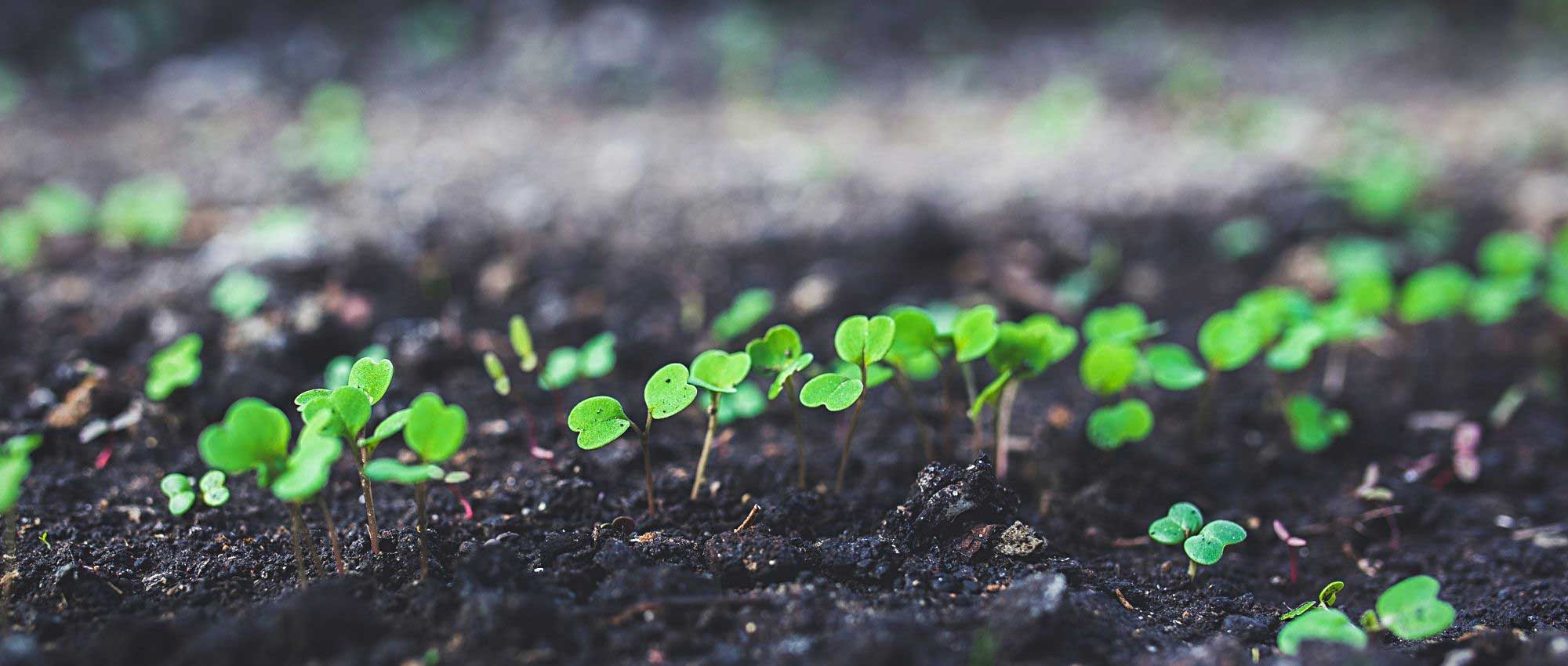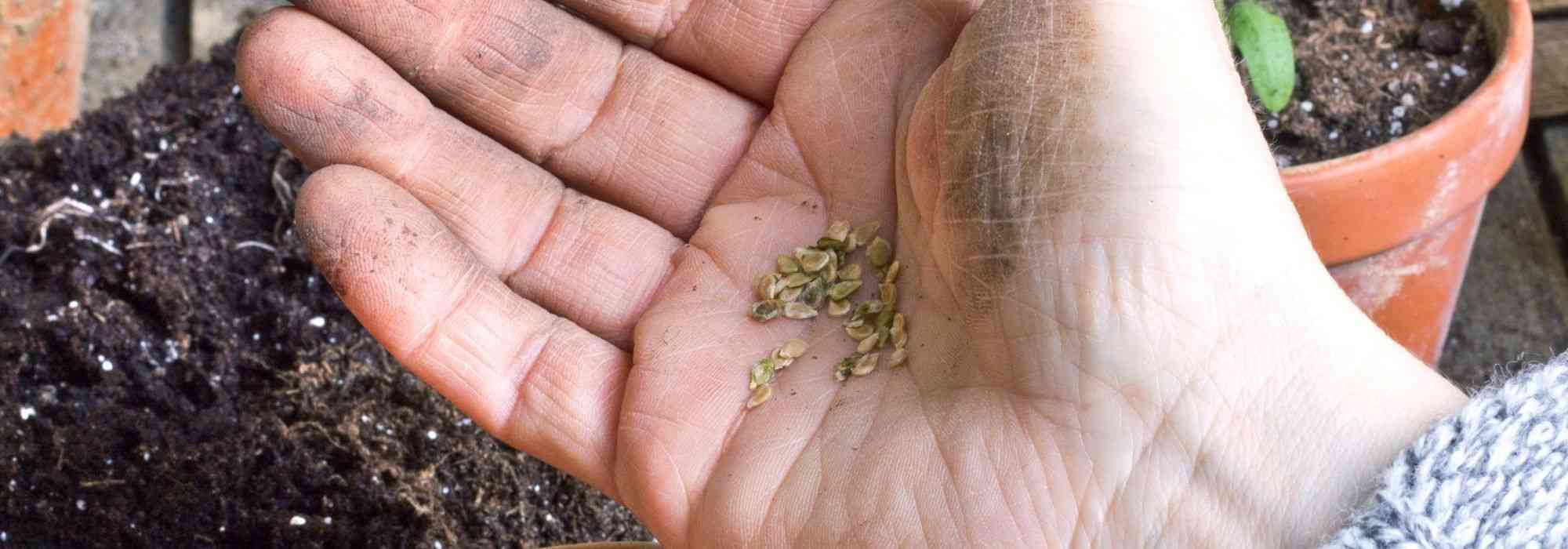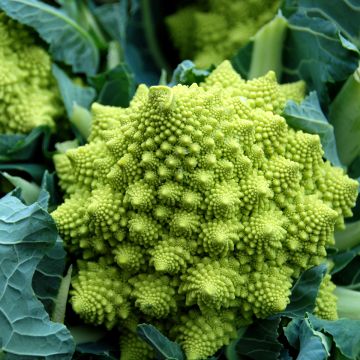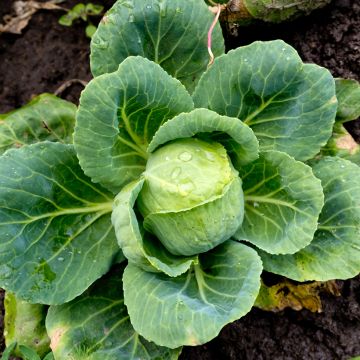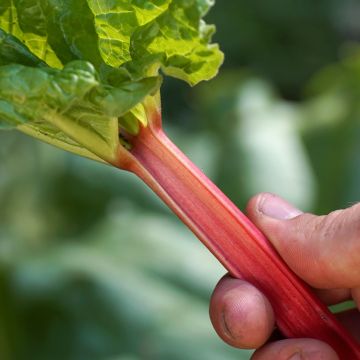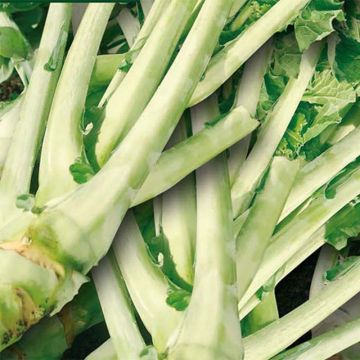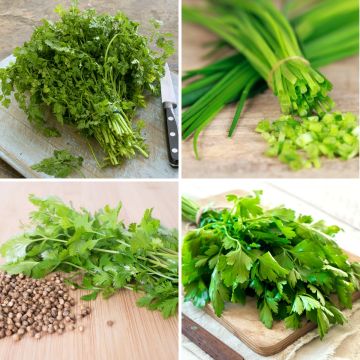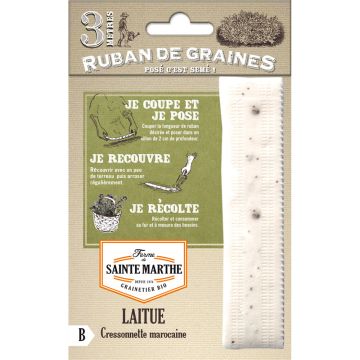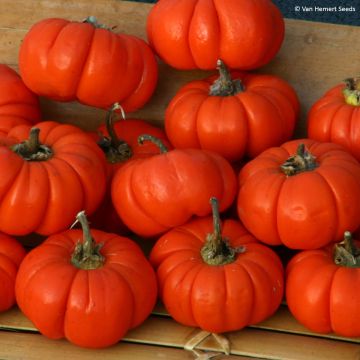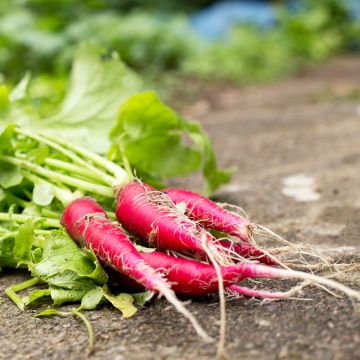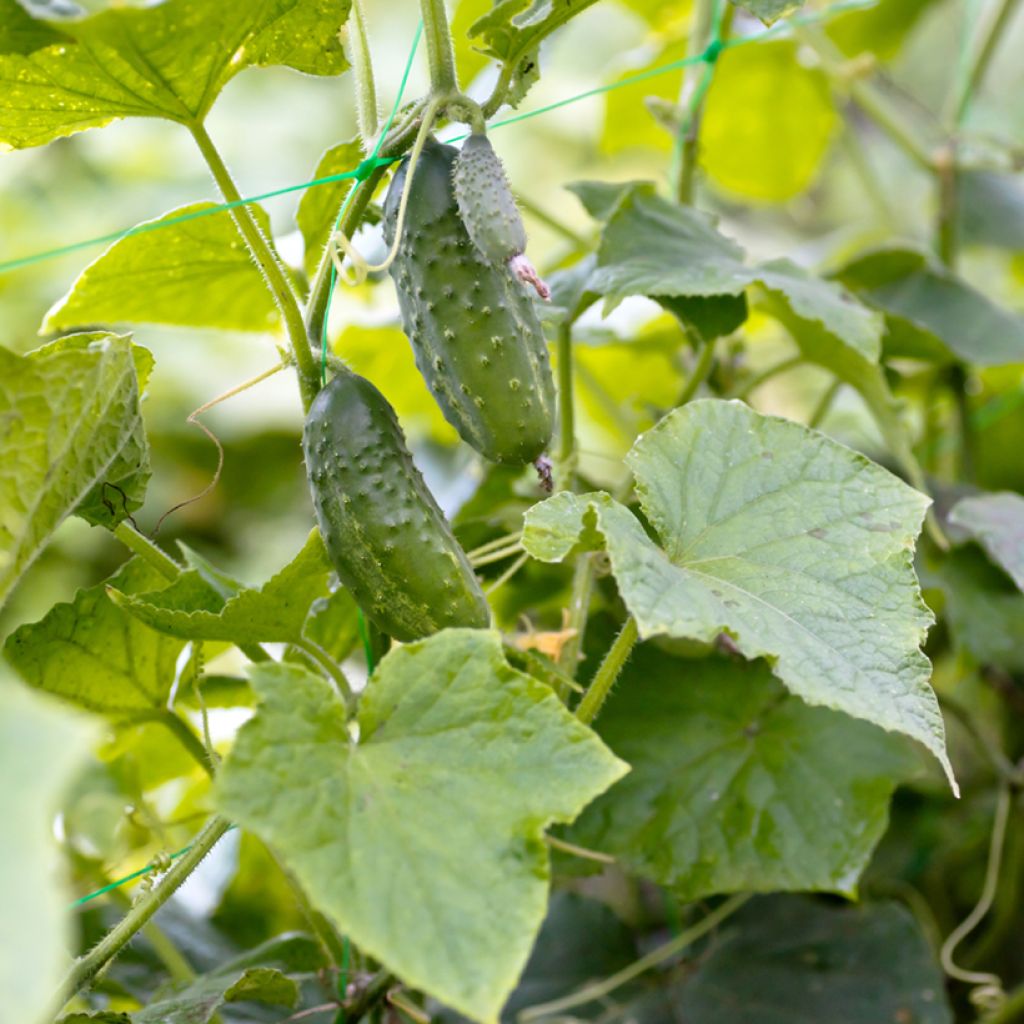

Gherkins Vert Petit de Paris organic seeds - Cornichon
Gherkins Vert Petit de Paris organic seeds - Cornichon
Cucumis sativus Vert Petit de Paris
Gherkin, Cornichon
Special offer!
Receive a €20 voucher for any order over €90 (excluding delivery costs, credit notes, and plastic-free options)!
1- Add your favorite plants to your cart.
2- Once you have reached €90, confirm your order (you can even choose the delivery date!).
3- As soon as your order is shipped, you will receive an email containing your voucher code, valid for 3 months (90 days).
Your voucher is unique and can only be used once, for any order with a minimum value of €20, excluding delivery costs.
Can be combined with other current offers, non-divisible and non-refundable.
Home or relay delivery (depending on size and destination)
Schedule delivery date,
and select date in basket
This plant carries a 6 months recovery warranty
More information
We guarantee the quality of our plants for a full growing cycle, and will replace at our expense any plant that fails to recover under normal climatic and planting conditions.
Description
The organic Vert Petit de Paris cornichon is an old hardy variety, known for its abundant production of small, cylindrical, short, and slightly bumpy fruits. Appreciated for its thick, firm, and crunchy flesh, it offers a delicate flavour enjoyed pickled in homemade jars. This vigorous variety is also disease-resistant. Sow from March to June, with a harvest expected from July to October. Certified organic seeds.
Gherkins and cucumbers belong to the same species, but gherkins are harvested early to be prepared for preservation, usually pickled in vinegar with small onions, peppercorns, and tarragon. This vegetable has a long shelf life and is traditionally enjoyed as a condiment, whether in salads or as a charcuterie accompaniment.
Cultivation conditions: gherkins prefer light, loose, moist, and humus-rich soils. They require a sunny exposure and temperatures between 18 and 22 °C. Water-loving, they need regular watering to maintain good growth.
Harvest: harvest 3 to 4 months after sowing, before the fruits reach their final size. It is important to harvest frequently, ideally every two days during periods of high production, as the fruits grow rapidly. Regular harvesting also promotes the appearance of new fruits.
Storage: after harvesting, gherkins can be stored in the refrigerator for a few days before being placed in jars with vinegar.
Gardener's tip: like other cucurbits, gherkins are sometimes affected by powdery mildew, recognizable by a white deposit on the leaves. In case of severe infestation, remove heavily affected leaves and apply a wettable sulfur treatment every two weeks. For a minor attack, a diluted mixture of skimmed milk at 10-20% in rainwater may suffice.
As a preventive measure, avoid watering the foliage and ensure good ventilation if the cultivation is done under cover. A horsetail decoction can also be sprayed to strengthen plant defences.
Report an error about the product description
Harvest
Plant habit
Foliage
Botanical data
Cucumis
sativus
Vert Petit de Paris
Curcubitaceae
Gherkin, Cornichon
Cultivar or hybrid
Annual
Other Gherkin seeds
View all →Planting and care
Sowing Vert Petit de Paris cornichon:
Germination occurs at a temperature between 16° and 35° and generally takes 8 to 10 days.
Sow from March to June, in a pot or directly in the ground:
In a pot, one month before the planned planting date, place 2 or 3 seeds in seed compost and water with a very fine rain. When the two true leaves appear, keep only one young plant per pot. Maintain the young plant at a mild temperature ensuring that the substrate remains moist but not waterlogged.
Sowing directly in the ground is done later, in well-warmed soil: then sow in a group of 2 or three seeds and proceed as for sowing in a pot.
During planting or direct sowing, maintain a distance of one metre between each row and 50 to 60 cm between each plant.
Cultivation:
The cucumber is a quite demanding vegetable, requiring well-fertilised soil. It is advisable, preferably in autumn, to provide mature compost (about 3 kg per m2), by digging to a depth of 5 cm, after having thoroughly loosened the soil. It prefers neutral soils (pH 7) but will also thrive in slightly acidic or alkaline soil (pH between 5.5 and 7.5).
The cucumber can be grown flat, but to save space, exploit its climbing habit by training it: on a frame covered with wire mesh, inclined at 45°, it will provide beneficial shade to lettuces or even in a teepee to bring a touch of charm to the vegetable garden.
When the plants are vertically trained, cultivation is done on a single stem pinched at a height of 2.5 metres. When growing flat, pinch above the second leaf to obtain two stems which will themselves be pinched above the 4th leaf. The final pruning consists of cutting to one leaf above each formed fruit.
Cucumber pairs well with corn, but avoid planting it near tomatoes and potatoes.
Seedlings
Care
Intended location
Planting & care advice
This item has not been reviewed yet - be the first to leave a review about it.
Similar products
Haven't found what you were looking for?
Hardiness is the lowest winter temperature a plant can endure without suffering serious damage or even dying. However, hardiness is affected by location (a sheltered area, such as a patio), protection (winter cover) and soil type (hardiness is improved by well-drained soil).

Photo Sharing Terms & Conditions
In order to encourage gardeners to interact and share their experiences, Promesse de fleurs offers various media enabling content to be uploaded onto its Site - in particular via the ‘Photo sharing’ module.
The User agrees to refrain from:
- Posting any content that is illegal, prejudicial, insulting, racist, inciteful to hatred, revisionist, contrary to public decency, that infringes on privacy or on the privacy rights of third parties, in particular the publicity rights of persons and goods, intellectual property rights, or the right to privacy.
- Submitting content on behalf of a third party;
- Impersonate the identity of a third party and/or publish any personal information about a third party;
In general, the User undertakes to refrain from any unethical behaviour.
All Content (in particular text, comments, files, images, photos, videos, creative works, etc.), which may be subject to property or intellectual property rights, image or other private rights, shall remain the property of the User, subject to the limited rights granted by the terms of the licence granted by Promesse de fleurs as stated below. Users are at liberty to publish or not to publish such Content on the Site, notably via the ‘Photo Sharing’ facility, and accept that this Content shall be made public and freely accessible, notably on the Internet.
Users further acknowledge, undertake to have ,and guarantee that they hold all necessary rights and permissions to publish such material on the Site, in particular with regard to the legislation in force pertaining to any privacy, property, intellectual property, image, or contractual rights, or rights of any other nature. By publishing such Content on the Site, Users acknowledge accepting full liability as publishers of the Content within the meaning of the law, and grant Promesse de fleurs, free of charge, an inclusive, worldwide licence for the said Content for the entire duration of its publication, including all reproduction, representation, up/downloading, displaying, performing, transmission, and storage rights.
Users also grant permission for their name to be linked to the Content and accept that this link may not always be made available.
By engaging in posting material, Users consent to their Content becoming automatically accessible on the Internet, in particular on other sites and/or blogs and/or web pages of the Promesse de fleurs site, including in particular social pages and the Promesse de fleurs catalogue.
Users may secure the removal of entrusted content free of charge by issuing a simple request via our contact form.
The flowering period indicated on our website applies to countries and regions located in USDA zone 8 (France, the United Kingdom, Ireland, the Netherlands, etc.)
It will vary according to where you live:
- In zones 9 to 10 (Italy, Spain, Greece, etc.), flowering will occur about 2 to 4 weeks earlier.
- In zones 6 to 7 (Germany, Poland, Slovenia, and lower mountainous regions), flowering will be delayed by 2 to 3 weeks.
- In zone 5 (Central Europe, Scandinavia), blooming will be delayed by 3 to 5 weeks.
In temperate climates, pruning of spring-flowering shrubs (forsythia, spireas, etc.) should be done just after flowering.
Pruning of summer-flowering shrubs (Indian Lilac, Perovskia, etc.) can be done in winter or spring.
In cold regions as well as with frost-sensitive plants, avoid pruning too early when severe frosts may still occur.
The planting period indicated on our website applies to countries and regions located in USDA zone 8 (France, United Kingdom, Ireland, Netherlands).
It will vary according to where you live:
- In Mediterranean zones (Marseille, Madrid, Milan, etc.), autumn and winter are the best planting periods.
- In continental zones (Strasbourg, Munich, Vienna, etc.), delay planting by 2 to 3 weeks in spring and bring it forward by 2 to 4 weeks in autumn.
- In mountainous regions (the Alps, Pyrenees, Carpathians, etc.), it is best to plant in late spring (May-June) or late summer (August-September).
The harvesting period indicated on our website applies to countries and regions in USDA zone 8 (France, England, Ireland, the Netherlands).
In colder areas (Scandinavia, Poland, Austria...) fruit and vegetable harvests are likely to be delayed by 3-4 weeks.
In warmer areas (Italy, Spain, Greece, etc.), harvesting will probably take place earlier, depending on weather conditions.
The sowing periods indicated on our website apply to countries and regions within USDA Zone 8 (France, UK, Ireland, Netherlands).
In colder areas (Scandinavia, Poland, Austria...), delay any outdoor sowing by 3-4 weeks, or sow under glass.
In warmer climes (Italy, Spain, Greece, etc.), bring outdoor sowing forward by a few weeks.






























